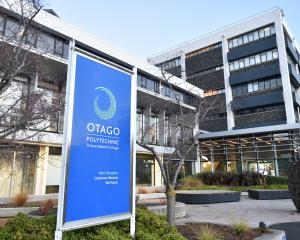The emergence from their underground "grave" of the first of the 33 Chilean miners at 4.15pm New Zealand time yesterday, having been trapped 625m underground in the Atacama Desert since August 5, is one of the great, heartening rescue stories of modern times.
At its centre are the miners themselves who have, over the space of more than two months - 69 days to be precise - conducted themselves in an exemplary manner, staving off lethargy, illness, depression, claustrophobia and hopelessness through both inner resource, fraternal camaraderie, and the assistance - once they were discovered and communication channels established - of the best advice and support that could be mustered, including that of the United States space agency, Nasa.
Regardless, surviving for this long in temperatures of about 32degC, and 95% humidity, with intermittent supplies, especially in the early days, of food and water, is remarkable enough in itself.
For some two weeks after the cave-in which left the miners trapped underground, their fate remained unknown - and their underground shelter potentially a tomb.
Not until August 22 did a drill probe the cavity in which the miners had taken refuge.
On the afternoon of that day Chilean President Sebastian Pinera was able to announce to the country that the miners had been located and had attached a note to the drill bit which read: "The 33 of us in the shelter are well."
But that was only the beginning of the story as it became apparent just how difficult and dangerous an engineering feat it would be to reach the trapped men and bring them back to the surface.
And that there would be uncertainties in the meantime - the possibilities of further cave-ins, of illness and medical emergency, of disharmony among the men, or of a catastrophe at the eleventh hour.
Several months was reduced to little more than two as mining engineers and drilling specialists completed their work in constructing the narrow shaft through which the rescue capsule, barely wide enough to fit a man, would hoist the miners to safety.
And yesterday afternoon the waiting world held its breath as the first, Florencio Avalos, made the slow suspenseful ascent.
The reappearance of the 31-year-old father of two, to hug his son and his wife, the Chilean president and others before being wheeled off for medical observation, triggered national and international celebrations and an outpouring of joy.
But it had rightly been preceded by notes of caution from Chile's Mining Minister Laurence Golborne.
As the rescue capsule - dubbed the "Phoenix" - was being fine-tuned and prior to the first recovery hoist, he said: "The rescue won't be over until the last person below leaves this mine."
It was a sentiment shared by the miners themselves, reportedly each arguing that he should be the last to make the 15 minute journey through the mountain of rock to the surface, and to freedom.
Even as a new morning breaks there will be a degree of anxiety as those remaining await their turn to re-enter what, after two months underground in extraordinary circumstances, may be for some a strange, different and potentially overwhelming world.
Their immediate futures will be quite different from their pasts.
The instant celebrity of two Australian miners, sealed underground for 14 days in Tasmania in 2006 gives an indication of the fate - and potential fortune - that awaits them; so does the congregation of the world's media in "Camp Hope", the tent settlement which has grown up above the mine.
There are already promises of trips to watch the famous Spanish and English football teams, Real Madrid and Manchester United, play; there will undoubtedly be television appearances, documentaries, books, even perhaps, movies.
If their time underground was insufficient to disturb their equilibrium then there is every chance their time in the glare of intense public scrutiny might - given fears already expressed for the men's psychological wellbeing.
The crisis has provided a stern test of leadership for the country's authorities, not least its newly elected president.
Setting the tone, Mr Pinera cut short a visit to Colombia to return to Chile the day following the disaster.
Ignoring pleas from advisers to avoid personal involvement - lest disaster turn to tragedy - he presided over a rescue operation that tapped into the best mining expertise from around the world.
He sacked the head of the country's mining regulatory body, and spent time with all the miners' families, and when he could not his wife deputised for him.
Thus the survival drama played out, uniting Chile in hope and prayer and, as it reached its climax, keeping a vast international audience on the edge of its seats - engrossed in this gritty, gripping testimony to the human spirit.











